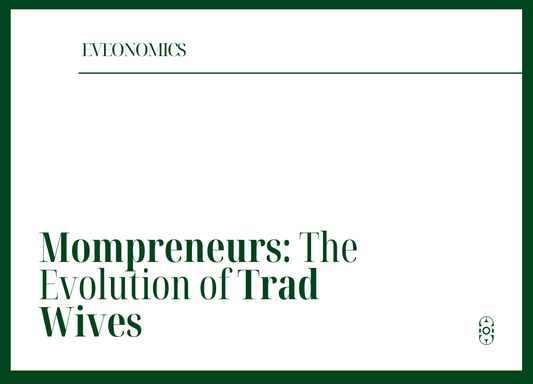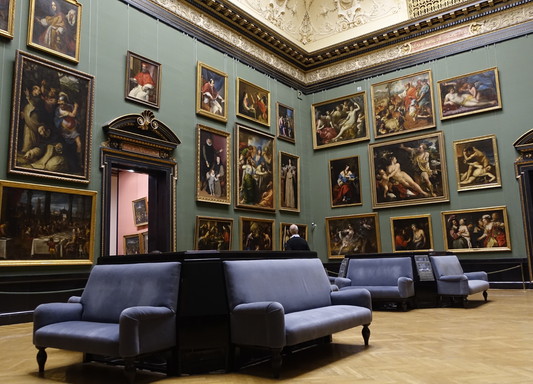Imagine a time when women were denied the basic right to open a bank account. This wasn’t just an inconvenience; it was a glaring reflection of a society that systematically undermined women's financial autonomy and independence. Today, we’re unpacking a crucial chapter in history to explore how banking restrictions shaped women’s lives and continue to resonate in our financial systems. Let’s dive into the timeline, legal hurdles, cultural attitudes, and the legacy of the era when women were barred from managing their own finances.
Historical Context
Let’s set the stage with a timeline that highlights just how recent these restrictions were. Until the late 19th and early 20th centuries, women in many parts of the world faced legal barriers that prevented them from opening bank accounts. This wasn’t merely a small oversight; it was part of a broader legal framework that stripped women of their rights. Coverture laws essentially meant that a married woman’s legal identity was swallowed by her husband’s. It wasn’t until the 1970s that we began to see significant shifts, allowing women to open bank accounts in their own names and take control of their financial destinies.
The timeline for women’s banking rights varied dramatically worldwide. Some countries introduced progressive laws earlier, while others lagged behind, illustrating the disparate treatment of women’s financial rights across cultures.
Legal Framework
The legal landscape of banking was steeped in a patriarchal system that dictated women’s financial capabilities. Coverture laws effectively stripped married women of the right to own property or enter into contracts, which included opening a bank account. Even single women often found themselves at a disadvantage, as many banks required a male co-signer for any financial transaction.
The road to change was slow but powerful. Landmark moments in the suffrage movement, along with relentless activism, laid the groundwork for the progress we now take for granted. The passage of the Equal Credit Opportunity Act in 1974 was a pivotal turning point, finally empowering women to open bank accounts and access credit without needing a man’s permission.
Economic Implications
The inability to own a bank account had serious economic implications for women. Without control over their finances, women were left vulnerable and dependent on their husbands or male guardians. This restriction stunted their ability to save, invest, and participate fully in economic life.
Let’s not forget that these banking barriers also impacted women’s employment opportunities. Many jobs required direct deposit, making it nearly impossible for women without bank accounts to secure stable positions. This cycle of dependency perpetuated gender inequality, reinforcing the notion that financial independence was out of reach for many women.
Social and Cultural Factors
Cultural attitudes played a crucial role in sustaining these banking restrictions. Many societies perpetuated the idea that financial matters were a male domain, leading to the belief that a woman's place was at home. This mindset didn’t just shape laws; it influenced generations of women, fostering a sense of financial dependency.
Enter the feminist movement—a powerful force that challenged these outdated norms. Activists fought tirelessly for women’s rights, including the fundamental right to financial independence. Their efforts were instrumental in paving the way for the financial freedoms we enjoy today.
Personal Stories and Anecdotes
Let’s ground this discussion with real-life experiences that bring this history to life. Consider the story of Mary, a woman in the early 20th century who longed to open a savings account. She was denied because she was unmarried and lacked a male co-signer. As a result, Mary had to rely on her brother to manage her savings, highlighting just how these laws stripped women of control over their own finances.
Figures like Alice Paul and Susan B. Anthony were trailblazers in this fight, using their platforms to advocate for women’s rights across the board, including in finance. Their courage and determination lit a fire for change that would ultimately alter the course of history for women’s financial autonomy.
Legacy and Impact
The legacy of these banking restrictions is still palpable today. While we’ve made incredible strides, women continue to face challenges in accessing financial services. Over 1.7 billion women globally remain unbanked, revealing a critical need for ongoing advocacy and reform.
We must confront issues like discriminatory lending practices, which continue to perpetuate financial disparities that began long ago. By reflecting on the history of women’s banking rights, we can better appreciate the ongoing fight for equality and recognise the importance of financial independence for all women.
Change in Progress
As we reflect on the significant progress made since these restrictive times, let’s also acknowledge the current challenges that women face globally in achieving financial independence. Supporting organisations that advocate for women’s financial rights and literacy is crucial for continuing this important work.
Now is the moment to take action. Together, we can ensure that the history of women being barred from owning bank accounts becomes a distant memory, paving the way for a future where financial independence is a reality for every woman.
Resources for Further Learning
For those eager to dive deeper into the history of women and banking, here are some valuable resources:
- Books: "Women & Money" by Suze Orman and "The Wealthy Gardener" by John Soforic offer insightful perspectives on women's financial journeys.
- Articles: Explore research studies on gender and finance from reputable journals to gain a more nuanced understanding.
- Organisations: Groups like Women’s World Banking and National Organisation for Women (NOW) are dedicated to advocating for women’s financial rights and literacy.
By confronting the historical barriers women faced in accessing banking services, we can foster a deeper appreciation for the importance of financial independence and continue the fight for equitable access to financial resources. Together, we can build a future where every woman has the tools and opportunities she needs to thrive.
*This article is for general information purposes only and is not financial advice. We are not licensed financial advisors. Please consult a qualified professional before making any investment decisions to ensure they fit your specific financial situation.





